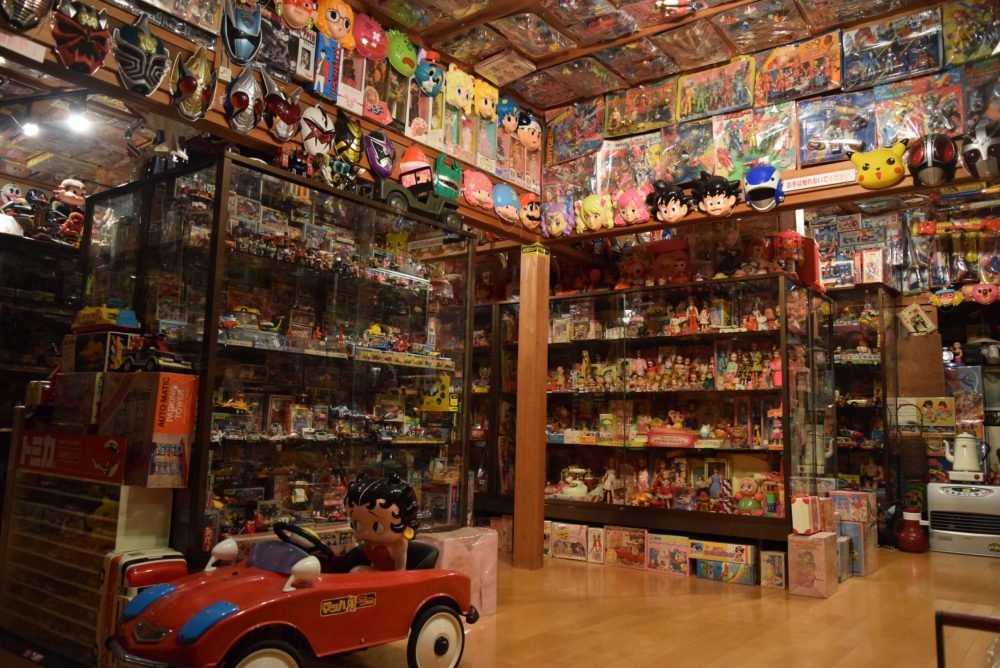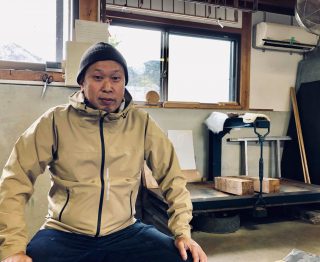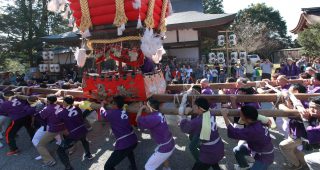Nara’s Asuka Village area is commonly associated with visiting ancient tombs that transport visitors back to the time of the Manyo poets, but for this article, I would like to introduce Asuka from a slightly different angle.
Moonlight Mask, Ultraman, Robocon, Licca-chan, Sailor Moon…
The place where you can meet these heroes of Japan’s Showa era is the “Aton Toy Museum”.
Aton is located in the area of Koyama, which is part of the northern foothills of Asuka Village and is made up of a maze of narrow lanes winding their way through the gentle countryside.
Arriving, I thought to myself, “Is there really a toy museum in such a place?” Moving through the area full of high expectations and a bit of anxiety, I suddenly came upon the museum.
Oh! Here it is!
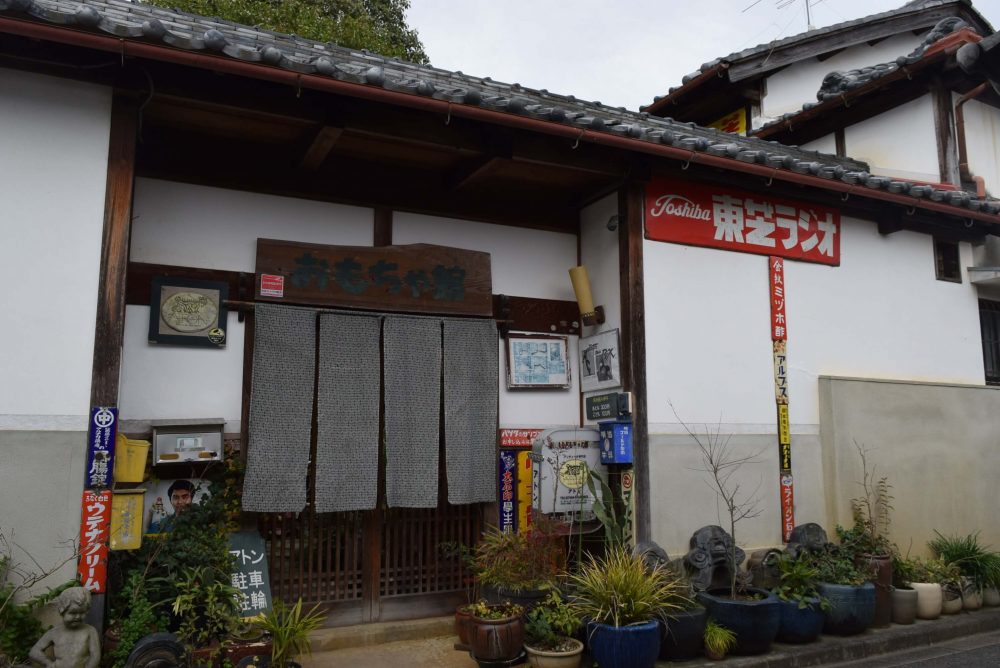
Passing through the curtain at the front door of the small old house, antique enamel signs and Ultraman dolls welcomed me in the courtyard.
I took off my shoes and went inside …
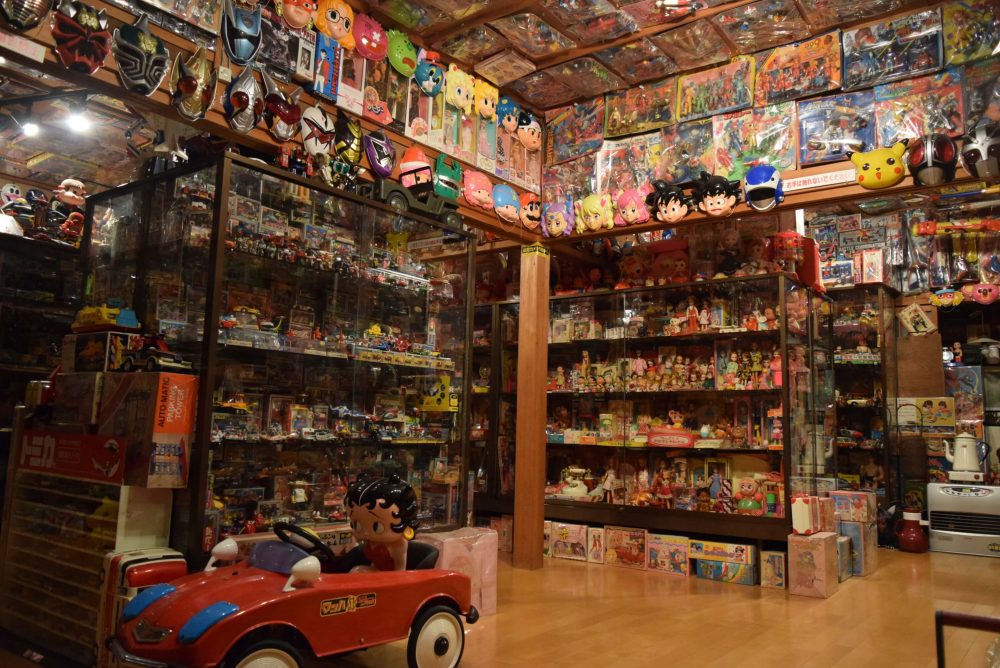
On the first floor, toys from the Meiji to Heisei periods (1868~2019) can be found, with the majority of the items mainly being from the Showa period (1926~1989).
The appearance of thousands of toys on display from floor to ceiling is impressive and there are about 40,000 items in total.
Looking over each toy in their cases, one by one, the atmosphere becomes overwhelming and it almost seems as if you can hear the chirping of all the toys whose age has passed.
“Oh, this is the Baron from the story of Perrine!”
“Wow, Taiyaki-kun! Oh, Licca-chan!”
Reunited with the toys that once I played with, I found myself cheering involuntarily.
“I can guess the approximate age of the customer depending on which characters they like,” remarked the museum Director, Mr. Tanaka.
Oh, he might have guessed my age…
It turns out, toys can actually tell us a lot more than just our ages…
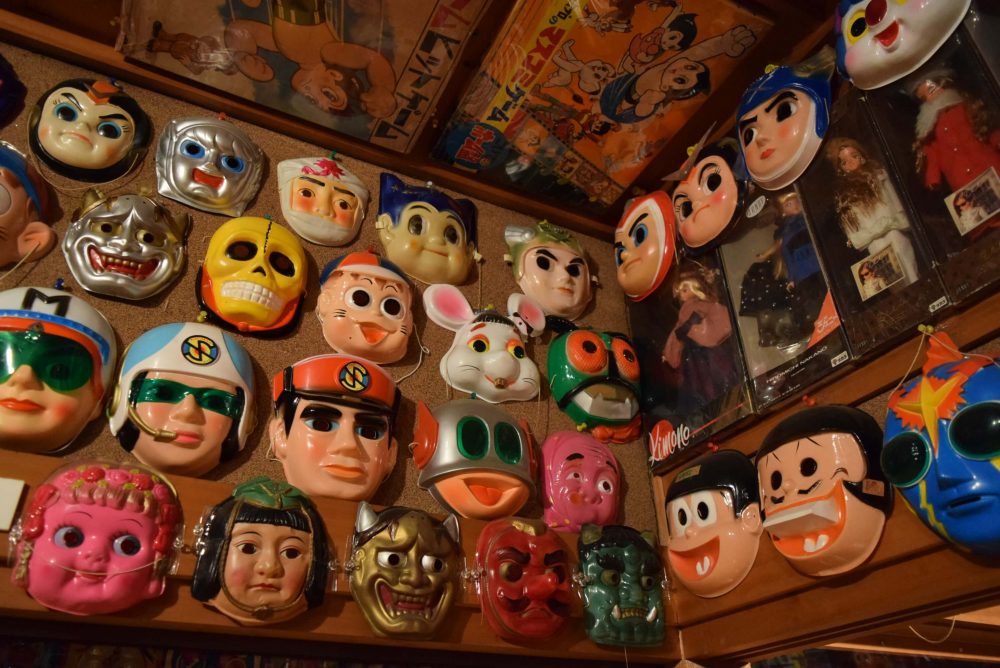
One example was in a mask which was made around 1955 and is a size smaller than the current version.
According to Director Tanaka, this was probably due to children’s physiques being different (in comparison with current-day children) in the time it was made.
Mud menko, from the Meiji era, was also on exhibition..
In the museum you can see that the material construction of toys has gradually changed from natural materials, such as wood and paper, to tin, celluloid, soft vinyl, and alloys. Indeed, a toy is a reflection of the time it was produced in.
Through close examination of toys, we can understand various interesting things.
After enjoying my reunion with the toys, I went to the second floor where household goods and stationery are on display.
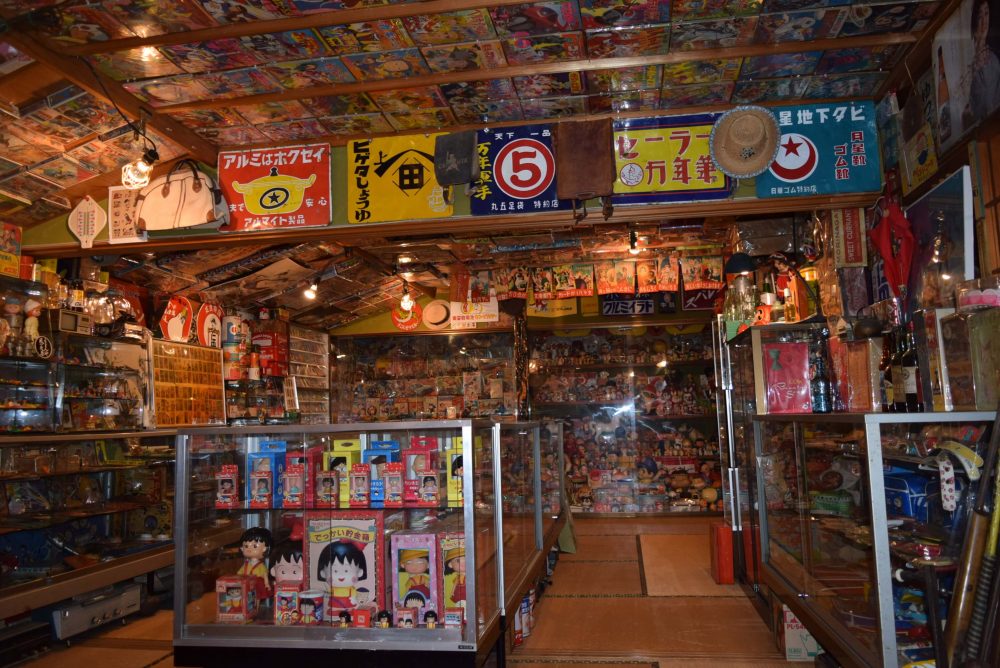
A small, special exhibition is also held several times a year, and on this day, the “Chibi Maruko-chan’s 30th Anniversary Exhibition” was being held. For a member of the generation who enjoyed Maruko-chan’s first TV serialization in real time, this was a must-see exhibition! Maruo-kun (another character from Maruko-chan), was also on display. Viewing time with a breath of snout like Maruo-kun(*one of Maruko-chan’s character). Upon seeing all this, I felt a longing for Maruo-kun’s (another character from the same show) slightly flustered expression.
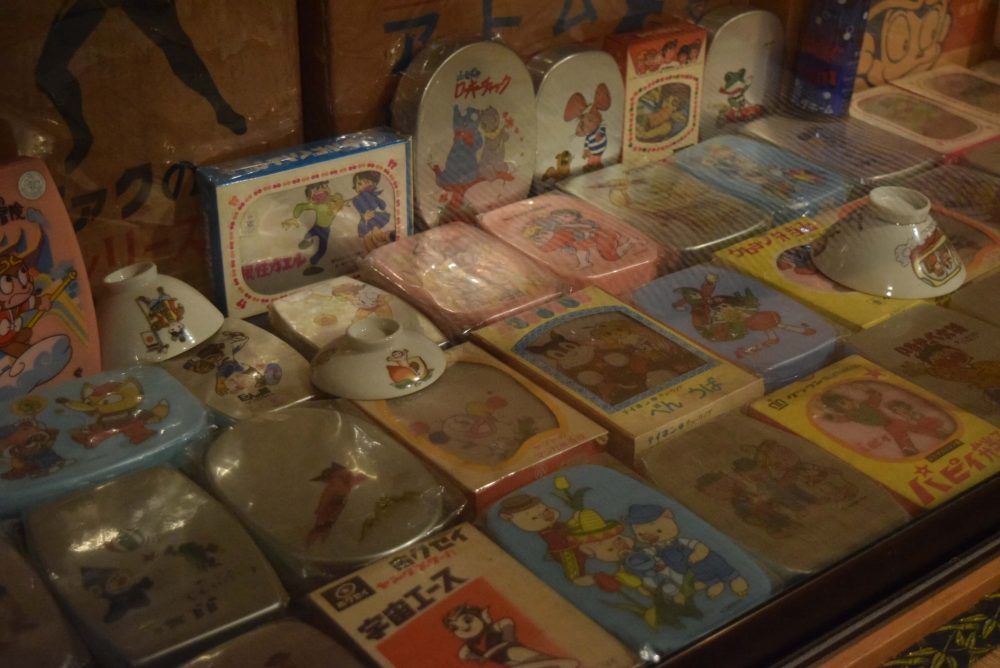
In the household goods corner, there were displays of character-themed slippers and aluminum lunch boxes.
When I was in kindergarten, I used one of these aluminum lunch boxes. It brought back my memories of a time when there was no microwave oven and our teacher reheated our lunches with a stove. I am sure that this area is popular for the excitement it brings to those who can find the stuff that they used in past times.
Also located on the 2nd floor are old-fashioned household goods such as black telephones that feel like the Showa period, furniture and daily necessities such as chabudai tables, snack packages, character-themed shampoo containers, batteries, and piggy banks.
All of these items were collected by the director, Mr. Kisio Tanaka.
Director Tanaka is a designer who has been attracted to Showa period toys since he first purchased a toy in order to use it for materials in his work. After that, his collection gradually expanded to include general household goods as well.
He collected things that were so obvious that nobody noticed them.Things that gradually disappeared from life that nobody took heed of.
When you’re at this museum, you may be struck with a mysterious feeling that these objects are talking to you about their upbringing.
“The place where you can meet with your past self” is a phrase written in the pamphlet of Aton Toy Museum.
“I can’t choose just one exhibit to recommend. This whole space is important” said Director Tanaka. Maybe, he is the protector of the key which opens the door to the memories of those “good old days” that exist in everyone’s heart.
Aton Toy Museum is fresh and interesting for generations who don’t know much about the Showa period and nostalgic for generations who still can recall those times on a personal level.
It is said that many people visit Asuka for this museum.
Asuka is packed with archeological sites that tell the story of ancient history, so why not change it up a little and add Aton Toy Museum to your Asuka trip itinerary as well?
Aton Toy Museum:
Address: 〒634-0101
336 Koyama, Asuka-mura, Takaichi-gun, Nara
TEL/FAX: 0744-54-3263
Opening hours: 10: 00-18: 00
Closed: Every Monday (open on holidays) ,
New Year and mid-August (Bon holiday period) are irregular holidays
* Temporary holidays will be announced on the official website.
Admission fee: Adults (junior high school and older) 300 yen
Children (4 years +) 100 yen
HP: http://aton.on.coocan.jp
Access:
By rental cycle:
15 minutes from Kintetsu Kashiharajingu-mae Station East Exit
By train or bus:
◎Kashihara community bus (170 yen for adults, 90 yen for children)
Kintetsu Yagi Station South Exit terminal 1
Get off at “Minami-ura cho” stop, 5 minutes on foot
Kintetsu Kashiharajingu-mae Station Central Exit terminal
Get off at “Asuka Koyama” stop, 3 minutes on foot
(operates only on weekends and holidays)
◎Asuka Tour Bus Akame
(one-day ticket: 650 yen for adults, 330 yen for children)
Kintetsu Kashiharajingu-mae Station East Exit terminal
Get off at the “Asuka Koyama” stop, 3 minutes on foot
Get off at the “Asuka” stop, 13 minutes on foot from Asuka

